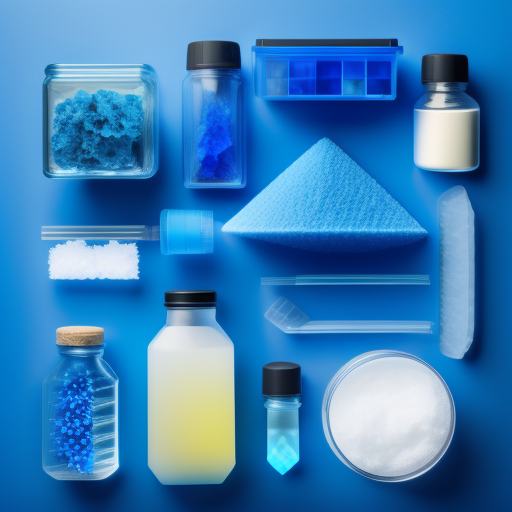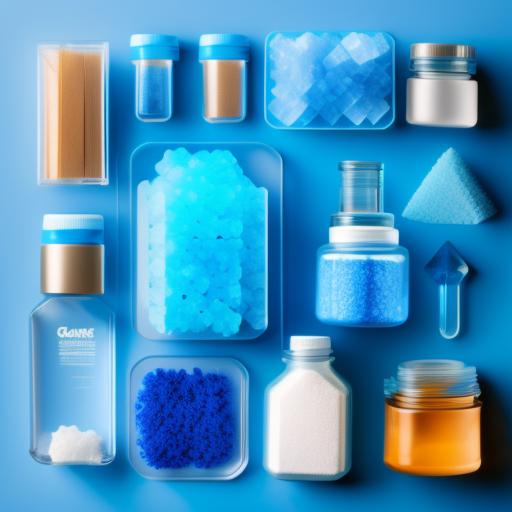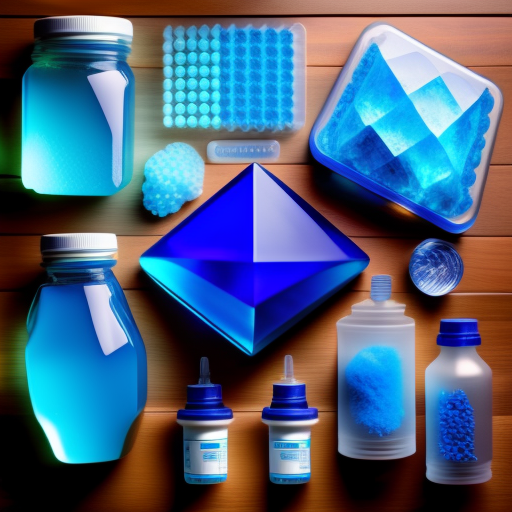Have you ever looked closely at a crystal and marveled at its natural geometric beauty? Growing your own crystals is an enjoyable STEM activity that allows you to experience the wonder of crystal formations up close. With the right materials and a bit of patience, you can become an amateur crystallographer cultivating gorgeous crystals at home.
This beginner’s guide will provide you with everything you need to know to get started growing crystals successfully. You’ll learn about:
- The most popular crystal growing kit brands
- The components and setup of a basic crystal growing chamber
- The crystal growing process from start to finish
- Crystal shapes and structures you can grow
- Fun educational activities using crystal growing
- Advanced techniques for unique crystal specimens
- Displaying and decorating your homegrown crystals
- Safety precautions and online resources for crystal growing enthusiasts
So let’s delve into the crystalline world and start growing!

An Introduction to Crystal Growing Kits
Crystal growing kits provide an easy entry point for beginners to crystallize various chemical solutions into faceted gems or shapely clusters. The kits contain pre-made crystal growing solution along with seeds, jars, substrates, and other tools needed to nurture crystal growth.
Crystal growing is an engaging hands-on STEM activity that brings science concepts to life. As children carefully monitor the growth of their vibrant crystals over days or weeks, they gain an appreciation of crystal structures, geometry, chemistry, and patience. The process encourages critical thinking skills and sparks curiosity in STEM fields.
The dazzling results also make a crystal growing kit a great educational gift for kids interested in science. Growing colorful crystals is an experiment sure to be a memorable and rewarding experience.
Popular Crystal Growing Kit Brands
There are a variety of crystal growing kit brands on the market that are great for beginners. Some top options include:
4M Crystal Growing Experiment
This standalone kit provides materials to grow 6-8 crystals in volcano, pyramid, and prism shapes. It comes with an informative color guide explaining the science behind crystal formation.
National Geographic Crystal Garden Science Kit
A science kit with a growing chamber, 3 types of crystal powder, reusable silicon molds in several shapes, and accessories for growing up to 12 crystals. Includes detailed instructions.
Thames & Kosmos
Thames & Kosmos offers crystal growing lab kits with enough materials for multiple growth sessions. The kits feature vibrant crystal types like borax and alum as well as tools like pipettes and pH paper.
Discovery #Mindblown Crystal Growing Kit
This kit grows two giant blue geode crystals with copper wire for hanging. Includes a display stand with lights that make the crystals sparkle.
National Geographic Mega Crystal Growing Lab
From the National Geographic STEM series, this kit grows crystals in three colors with plastic crystal trees for displaying the completed crystals. Comes with an experiment guide.
Components of a Crystal Growing Kit
While each crystal growing kit is a little different, they generally contain similar basic components:
- Crystal-growing solution – This is the chemical solution that forms the crystal structure. Common solutions are borax, alum, and Epsom salt.
- Seed rocks – Small starter crystals added to the solution to encourage ordered crystal growth.
- Base platform – A substrate for the crystals to form on like a piece of string, sandpaper, or ceramic dish.
- Growing chambers – Containers like jars, plastic growing vats, or Petri dishes to house the solution during crystal growth. May include silicon molds to shape crystals.
- Accessories – Tweezers, pipettes, safety goggles, and other tools to aid the crystal growing process.
- Display stands – Plastic trees or wired posts to mount finished crystals on for decoration and display.
- Coloring agents – Chemical additives like food dye or alum powder to grow colorful crystals.
- Instruction guide – Step-by-step instructions walking through the crystal growing lab activity.

Types of Crystals and Shapes
Crystal growing kits can produce a variety of crystalline structures in different colors and forms:
- Natural formations – Crystalline clusters and rocks with no defined shape. Often made of borax.
- Molded crystals – Distinct shapes like pyramids and prisms cast in plastic molds.
- Geode crystals – Large individual crystals grown on a wire shaped like the inner structure of geodes.
- Dendritic crystals – Crystals with branching tree-like patterns, commonly made of Epsom salt.
- Bismuth crystals – Iridescent stair-stepped cubes formed by bismuth alloys. Need specialized equipment.
- Salt crystals – Cubic crystals made from dissolved salt which is allowed to evaporate.
- Sugar crystals – Formed by allowing a sugar solution to evaporate. Tend to form small gritty crystals.
- Alum crystals – Octahedral crystals made by crystallizing hydrated potassium aluminum sulfate, often dyed.
With the right combination of solutions and conditions, you can grow a wide variety of crystal types at home.
The Crystal Growing Process
Growing crystals is a simple process but requires vigilance and patience as crystals form over hours or days. Here is an overview of the basic crystal growing procedure:
1. Prepare the crystal growing solution.
- Start with a pre-made crystal growing lab solution, or make your own by combining ingredients like borax or Epsom salt with water following kit instructions.
- Add food dye, alum powder, or other additives to color your crystals.
- Carefully pour the solution into the growing container, filling it halfway.
2. Set up the growing chamber.
- Place seed rocks, string substrates, or other platforms in the solution. Position silicon molds if using.
- Cover the container with plastic wrap or lid with holes for ventilation.
3. Let the crystals grow.
- Provide light without excessive heat and avoid vibration or movement.
- Wait patiently from 1-7 days as crystals slowly form in the solution.
4. Harvest and display the crystals.
- When crystals have reached the desired size, remove them from the solution using tweezers.
- Rinse off any excess solution and allow to dry fully.
- Mount the crystals on plastic display trees or stands to showcase their beauty!
With good conditions, you’ll be rewarded with a bumper crop of eye-catching crystals.
Educational Aspects of Crystal Growing
In addition to being fun, crystal growing kits provide a wealth of learning opportunities for students. Here are some of the key educational benefits:
- Introduces chemistry concepts – Explains solutions, chemical bonding, precipitation, geometry, and the nature of crystals.
- Teaches crystal structures – Demonstrates the repeating orderly atomic lattice that makes up crystalline solids.
- Models crystal growth – Shows how crystals emerge and expand from seed crystals in a supersaturated solution.
- Encourages scientific observation – Keeping a growth journal draws attention to changes over time.
- Inspires passion for STEM – Hands-on experiments get kids engaged in science. The dazzling crystals can spark lasting interests.
Crystal growing lends itself well to classroom STEM activities. Teachers can use crystal growing to educate on chemistry, physics, measurement, data analysis, and the scientific method. Students can hypothesize crystal size and shape, then observe and record results. Crystals can even be integrated into engaging science fair projects.
Advanced Crystal Growing Techniques
Once you’ve mastered the basics, try these more advanced crystal growing methods:
- Grow crystals in a Petri dish – Flat and open, Petri dishes allow even crystal growth unobstructed.
- Use paper as a substrate – Strips of paper hung in the solution will sprout crystalline fibers.
- Grow a large single fluorite crystal – Fluorite requires close monitoring to form one large cubic crystal.
- Create light-up crystals – Use glow powder and black lights to make supernatural glowing crystals.
- Grow iridescent rainbow crystals – Bismuth alloys crystallize into stunning iridescent cubes.
These techniques demand patience but produce one-of-a-kind crystalline specimens. Expand your crystal horizons!
Displaying and Decorating Your Crystals
Once grown, crystals can be artfully displayed:
- Mount crystals on their included display trees or stands to show them off.
- Make DIY displays like painting stands with crystals embedded in Mod Podge.
- Hang crystals in windows where sunlight makes them sparkle.
- Glue crystals into the cavities of broken geode halves for an eye-catching interior decorator accent.
- Group crystals of varied shapes and colors together in crystal collections.
The geometric beauty of crystals adds a special decorative touch. Integrate them into your home or office’s décor or give as gifts.

Crystal Growing Safety Tips
Growing crystals is safe with proper precautions:
- Handle solutions carefully – Some can irritate skin and eyes or stain surfaces.
- Use eye protection – Safety goggles guard eyes when pouring solutions.
- Practice good hygiene – Wash hands after use and avoid touching your eyes or mouth.
- Supervise children – Adult help prevents spills and improper use of materials.
- Follow disposal instructions – Some solutions require special disposal. Never pour down household drains.
Take safety measures and crystal growing can be perfectly safe fun for the whole family. Protective equipment like gloves, goggles, and aprons are recommended.
Online Resources for Crystal Growing Enthusiasts
To take your crystal growing hobby further, check out these useful online resources:
- LSIGraph provides an easy LSI keyword tool to optimize website content based on semantic search algorithms.
- Latent Semantic Value (LSV) analyzes written content to recommend improvements for SEO-friendliness.
- Content Writer is a blog with tips for creating engaging, high-quality educational content.
- Instructables – This community shares crystal growing tutorials and project ideas.
- Reddit Crystal Growing – An active subreddit forum discussing advanced crystal growth techniques.
Let Your Inner Crystals Shine
Welcome to the glimmering world of crystal growing! With this beginner’s guide, you now have the knowledge to start cultivating gorgeous crystals at home. Grow your scientific curiosity and appreciation for natural beauty while making memorable STEM learning experiences. What dazzling crystals will you create?
Frequently Asked Questions
What are the fastest growing crystals?
Alum crystals tend to grow the quickest, sometimes reaching full size overnight. Materials like copper sulfate and Epsom salt also grow robust crystals relatively quickly. Slow-growing crystals include borax and bismuth.
How big can crystals grow?
With optimal conditions, crystals can grow quite large, over 12 inches long! But most homegrown crystals max out around 1-3 inches. The size depends on the type, saturation of the solution, and duration of growth.
Can you grow crystals without a kit?
Yes, you can grow crystals without a kit using household materials. All you need is a crystal-growing solution like borax or alum, containers, string, pipettes, and seed crystals. Kits just provide these materials and instructions conveniently.
What is the right temperature for crystal growth?
Ideal crystal growing temperature is around 60-75°F. Avoid extreme heat or cold. Hot temperatures speed evaporation, causing small crystals, while cold slows growth. Maintaining a stable, moderate temperature gives the best crystal results.
Is it safe to let kids handle crystal growing chemicals?
With proper adult supervision, crystal growing is generally safe for kids. Have them wear gloves, goggles, and aprons when handling solutions. Remind them not to touch their eyes or mouth during the process. Follow kit safety instructions closely. Growing crystals can be an educational experience.